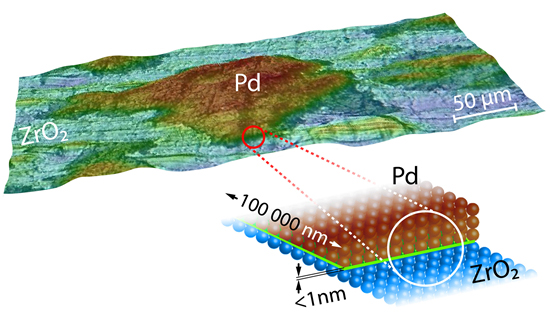The taste of the chocolate cake’s icing should not depend on whether it is served on a porcelain or silver plate. Similarly, for chemical reactions on large metal particles the support on which the particles are deposited should not play a crucial role, because atoms noticeably affect only their immediate vicinity. It was believed that for catalytic particles containing thousands of atoms the support should not affect chemical reactions occurring far away from it. However, an astonishing longrange effect of supports has been discovered, which can make car exhaust catalytic converters more efficient, in particular, for decreasing emissions of toxic carbon monoxide (CO).
The results published in Nature Materials magazine were obtained from experiments performed by Prof. G. Rupprechter and co-workers (TU Vienna, Austria) and understood by computational modelling led by team of ICREA Professor K. Neyman (Universitat de Barcelona). Surprisingly, chemical processes on palladium microcrystalline particles used as exhaust gas catalysts changed significantly when such particles were supported on chemically inactive metal oxides.
CO produced by combustion engines must be converted into CO2. This is achieved by catalysts containing palladium and platinum. The present study dealt with chemical reactions on micrometre size palladium grains. For grains supported on oxides of aluminium or zirconium the resulting catalysts remained active at notably higher CO presure. Remarkably, less than a nanometre wide contact line between grains and support influenced CO oxidation reactions on the surface of the entire palladium grains that are hundred thousand times larger. Visualisations by a photoemission electron microscope revealed that catalyst deactivation always starts where a grain contacts the support and from there deactivation spreads like a tsunami wave over the whole grain. Hence, the contact line with the supports is pivotal for modifying chemical properties of supported grains. These observations are rationalized by calculated stronger binding of oxygen on palladium atoms in direct contact with the support.
References
